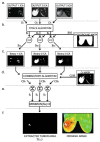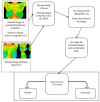Breast Cancer Detection Using Infrared Thermal Imaging and a Deep Learning Model
- PMID: 30149621
- PMCID: PMC6164870
- DOI: 10.3390/s18092799
Breast Cancer Detection Using Infrared Thermal Imaging and a Deep Learning Model
Abstract
Women's breasts are susceptible to developing cancer; this is supported by a recent study from 2016 showing that 2.8 million women worldwide had already been diagnosed with breast cancer that year. The medical care of a patient with breast cancer is costly and, given the cost and value of the preservation of the health of the citizen, the prevention of breast cancer has become a priority in public health. Over the past 20 years several techniques have been proposed for this purpose, such as mammography, which is frequently used for breast cancer diagnosis. However, false positives of mammography can occur in which the patient is diagnosed positive by another technique. Additionally, the potential side effects of using mammography may encourage patients and physicians to look for other diagnostic techniques. Our review of the literature first explored infrared digital imaging, which assumes that a basic thermal comparison between a healthy breast and a breast with cancer always shows an increase in thermal activity in the precancerous tissues and the areas surrounding developing breast cancer. Furthermore, through our research, we realized that a Computer-Aided Diagnostic (CAD) undertaken through infrared image processing could not be achieved without a model such as the well-known hemispheric model. The novel contribution of this paper is the production of a comparative study of several breast cancer detection techniques using powerful computer vision techniques and deep learning models.
Keywords: DNN; RNN; SVM; breast; cancer; deep learning; detection; neural network; visual techniques.
Conflict of interest statement
The authors declare no conflict of interest.
Figures



















References
-
- National Breast Cancer Foundation . Breast Cancer Facts. National Breast Cancer Foundation; Sydney, Australia: 2016.
-
- Dongola N. Mammography in Breast Cancer. [(accessed on 24 August 2018)]; Available online: https://emedicine.medscape.com/article/346529-overview.
Publication types
MeSH terms
LinkOut - more resources
Full Text Sources
Other Literature Sources
Medical
Miscellaneous

